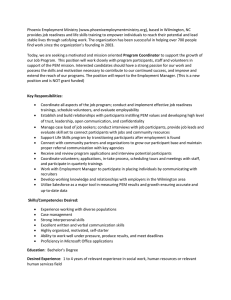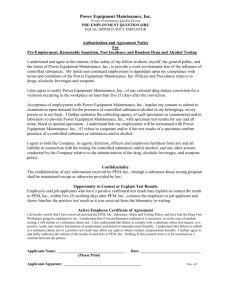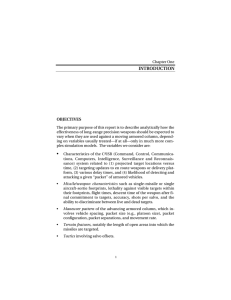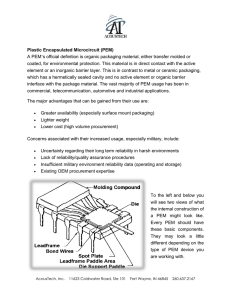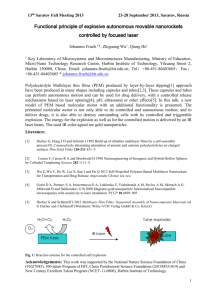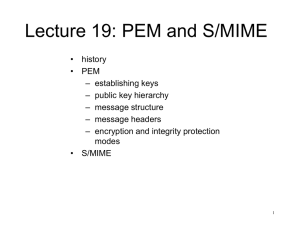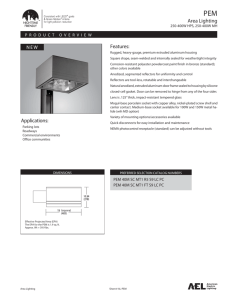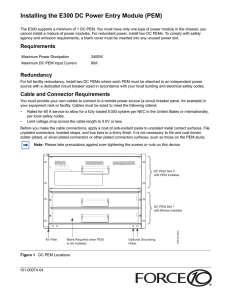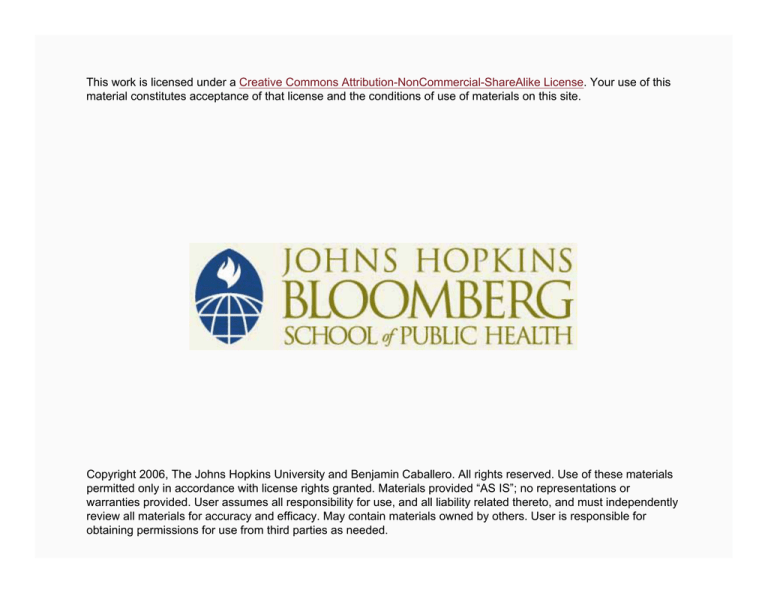
This work is licensed under a Creative Commons Attribution-NonCommercial-ShareAlike License. Your use of this
material constitutes acceptance of that license and the conditions of use of materials on this site.
Copyright 2006, The Johns Hopkins University and Benjamin Caballero. All rights reserved. Use of these materials
permitted only in accordance with license rights granted. Materials provided “AS IS”; no representations or
warranties provided. User assumes all responsibility for use, and all liability related thereto, and must independently
review all materials for accuracy and efficacy. May contain materials owned by others. User is responsible for
obtaining permissions for use from third parties as needed.
Protein-Energy Malnutrition
Benjamin Caballero, MD, PhD
Johns Hopkins University
Section A
Causes, Classifications, and Diagnosis
Archives of Disease in Childhood
4
Some Definitions
Fasting
− Complete cessation of food intake for variable periods of
time
Starvation
− Severe and sustained reduction in food intake, eventually
causing functional and structural damage
5
General Classifications of PEM
Primary, secondary
Acute, chronic
Marasmus, kwashiorkor
Edematous
By severity—mild, moderate, severe
6
Causes
Insufficient food intake
− Anorexia due to illness
− Eating disorders
− Dietary practices or beliefs
Insufficient food availability
− Civil war, political instability
− Socio-economic oppression
− Limited agricultural development
7
Causes
Impaired nutrient absorption or excessive losses
− Malabsorption syndromes
X Primary or secondary
− Gastrointestinal diseases
− Short gut syndrome
8
The Malnutrition-Infection Cycle
Inadequate intake
Anorexia
Malabsorption
Nutrient losses
Nutrient requirements
Weight loss
Mucosal damage
Immune deficiency
Susceptibility to infection
9
Impact of Common Infections on Growth Guatemala (L. Mata)
Adapted by CTLT from The Children of Santa Maria Conque: A Perspective Field Study of Health & Growth
10
Nutrient Losses During Infection
11
Diagnosis of PEM
Weight for age
− Indicates past or present malnutrition
− Used as a population indicator of PEM
− Gomez classification:
X I
75–90%
X II 60–74%
X III <60%
12
Diagnosis of PEM
Weight for height
− Indicates present nutritional status (wasting)
− Waterlow classification
X Mild: 80–89% (–1 to –2 Z)
X Moderate: 70–79 (–2 to –3 Z)
X Severe: <70 (< –3 Z)
13
Diagnosis of PEM
Height for age
− Indicates chronic growth delay (stunting)
X Mild: 90–94% (–1 to –2 Z)
X Moderate: 85–89% (–2 to –3 Z)
X Severe: <85% (< –3 Z)
14
Prevalence of Stunting (%) and Numbers of Children Affected
1980, 1985, 1990, 1995 by Region
Region
Prevalence Stunting
Numbers Stunted (in millions)
% Increase (+) or
Decrease (-) in
Numbers from
1980 to 1995
1980
1985
1990
1995
1980
1985
1990
1995
Sub-Saharan Africa
37.4
38.1
38.7
39.4
26.255
30.832
36.248
42.590
+62
Near East/North Africa
30.8
25.9
23.0
22.2
11.397
10.991
10.865
10.913
-4
South Asia
66.1
61.9
57.7
53.5
88.873
93.237
91.520
89.877
+1
South East Asia
51.9
47.3
42.8
38.3
35.581
32.862
30.119
30.206
-15
Middle America/
Caribbean
31.6
30.4
29.1
27.8
5.398
5.467
5.631
5.626
+4
South America
25.0
21.0
16.9
12.9
8.285
7.309
5.965
4.644
-44
183.85
6
+5
China (1992)
Across all regions
(Excluding China)
31.4
48.8
45.6
42.5
36.068
39.9
175.789
180.698
180.348
15
Section B
Pathophysiology, Management, and Prevention
Major Changes in PEM
Reduced protein synthesis
− Cessation of growth
− Loss of LBM
− Decreased immune response
− Loss of epithelial integrity
− Impaired liver function
17
Major Changes in PEM
Negative energy balance
− Decreased energy expenditure
− Loss of fat body mass
− Apathy, lethargy
18
Treatment
Stabilization
− Rehydration
− Antimicrobial therapy
19
Treatment
Refeeding
− Initial—0.7g/k protein and 60 kcal/k energy, Vitamin A
− Target—4g/k protein and 150–200 kcal/k energy
− Iron and other minerals
20
Treatment
Refeeding
− Initial—0.7g/k protein and 60 kcal/k energy, Vitamin A
− Target—4g/k protein and 150–200 kcal/k energy
− Iron and other minerals
21
PEM: Indicators of High Risk
Age < 6 months
Wt/Ht > 2 Z
Arm muscle area < 5th percentile
Serum albumin < 2.5 g/dL
Serum transferrin < 100 µg/dL
22
PEM: Indicators of High Risk
Infection—Pneumonia, measles, sepsis
Severe dehydration, acidosis
Stupor, coma
Hypothermia, hypoglycemia
Tachycardia, signs of cardiac insufficiency
Jaundice
23
Bodyweight Recovery
Adapted by CTLT from Modern Nutrition in Health & Disease, 7th Ed.
24
Prevention
Breastfeeding
Adequate weaning foods
Control of infections
Education
Economic development
Food and agricultural policies
Copyright 2005, Benjamin Caballero and The Johns Hopkins University. All rights reserved. Use of these materials permitted
only in accordance with license rights granted. Materials provided “AS IS”; no representations or warranties provided. User
assumes all responsibility for use, and all liability related thereto, and must independently review all materials for accuracy
and efficacy. May contain materials owned by others. User is responsible for obtaining permissions for use from third parties
as needed.
25

